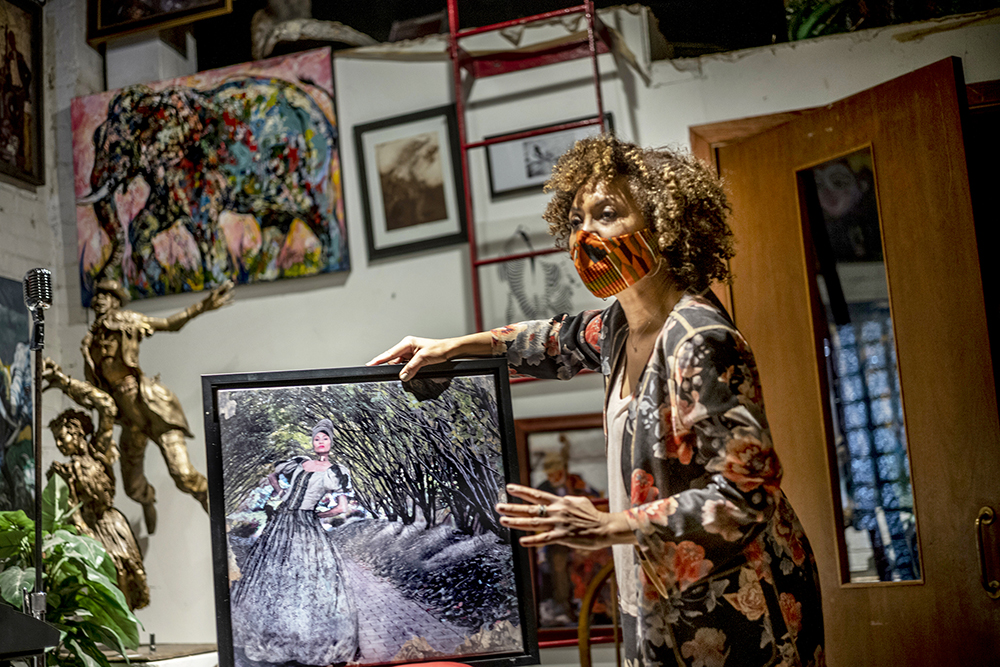
Natalie Jackson works with digital photography to create images that depict the often untold dark and exploitive truths of America. Her work presents a duality between dark and light, truth and historic fabrication. It is art that promotes social change. (PHOTO BY DAVID ZALAZNIK)
Natalie Jackson grew up understanding racial injustice. She lived in a home filled with powerful images that conveyed beauty, despair, fragility, strength and resolve. Her father, artist Preston Jackson, is a sculptor, musician and long-time faculty member at the Art Institute of Chicago.
Natalie Jackson remembers loving the shutter sound of her father’s camera. She received her first Kodak Instamatic when she was 10, and she and the camera became inseparable. She became the unofficial family photographer because she was never without her camera.
She’s now a professional photographer whose portfolio ranges from jazz musicians and commercial work to photojournalism and fine art photography that is often painterly, abstract and hauntingly beautiful. With digital images, she composes visual narratives that transcend years of racial injustice.
Jackson was born in Decatur and grew up in Peoria. She has lived in Chicago, St. Louis, Charlotte and Atlanta and is now back in her hometown of Peoria.
More than 20 years ago, she had her first solo show in Atlanta in an upscale Black hair salon. Her images depicted the beauty of Black hair. It was two decades before legislation in 2020 outlawed discrimination against Black hairstyles. The Crown Act was significant for raising awareness about a problem many White people never knew existed.
“We’ve known about discrimination all our lives. The pandemic and the toll it has taken on Black people makes it clear. We end up on the bottom rung,” Jackson said.
She’s always loved vintage fashion but knew the magazine covers of the 1940s, 1950s and 1960s included models who did not look like her. She created “Crowns of Empowerment” as a series of famous magazine covers depicting beautiful Black women. That image of beauty first attracts a viewer’s eye and then upon closer examination they are “slapped” with a tag line or subhead about the murder of Mamie Till’s son Emmett Till, the church bombing in Birmingham that killed four children and blinded a fifth or the bomb thrown by the Ku Klux Klan on the porch of Coretta Scott King’s dream home when she was there alone with her children.
“This was a time women were just fighting for basic human rights,” Jackson said during a discussion in her studio at the Contemporary Art Center in Peoria. “Art speaks to people in a whole different language. It is full of connectivity. Art communicates in a way words don’t. You can read history books and learn facts. Then you can see images and personally relate to the emotions.”
Learning the history of discrimination in America is critically important, Jackson said.
“America has to face the truth of its history. If we don’t deal with the truth, it keeps resurfacing and happening again,” she said.
Her show “Crowns of Empowerment” continues at the McLean County Art Center, 601 N. East St., Bloomington, through April 23.
